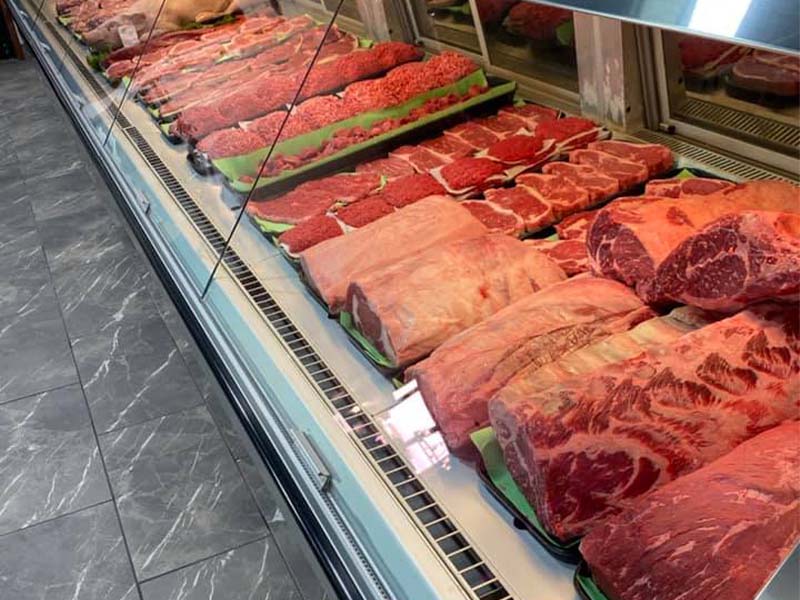Discover the Art of the Butcher's Cut in a Modern Meat Market
In the ever-evolving landscape of modern meat markets, the butcher's cut has actually transcended its conventional origins, merging old-time craftsmanship with modern practices. What genuinely sets the contemporary butcher apart is their ability to create a deeper link between consumers and the beginnings of their meat.
Development of Butchery Strategies

The mid-20th century saw butchery techniques further improved by clinical understandings into muscle biology and meat aging, boosting both inflammation and taste. Developments like vacuum product packaging and refrigeration prolonged product shelf-life, allowing butchers to diversify offerings and enhance quality assurance. This period additionally noted the rise of customized equipment, such as band saws and meat slicers, which raised precision and efficiency in meat handling.
Digital systems now assist in tracking pet provenance and optimizing cuts to satisfy details client choices. Additionally, a rebirth in artisanal butchery has emerged, mixing conventional abilities with modern understanding to provide to consumers looking for ethical and sustainable meat alternatives.

Understanding Meat Cuts

Understanding the complexities of meat cuts is vital for both butchers and consumers seeking quality and worth. Each cut originates from a various part of the pet, presenting one-of-a-kind tastes, structures, and food preparation approaches. Proficiency of these differences not only boosts cooking experiences but also takes full advantage of the utility of each carcass. For butchers, specific cuts mirror skill and respect for the craft, making certain marginal waste and ideal yield.
The key classifications of meat cuts consist of primal, sub-primal, and retail cuts. Butchers then break these down even more into sub-primal cuts, prior to ultimately creating retail cuts offered to consumers, like ribeye or tenderloin.
Recognizing muscle structure is essential; muscle mass made use of much more often by the pet tend to be tougher and are best matched for slow cooking techniques, while less-used muscular tissues, like those found in the loin, are much more tender and perfect for cooking or roasting. Familiarity with these distinctions equips customers to make informed options, improving their cooking undertakings.
Picking Top Quality Meat
Picking the ideal meat involves even more than simply picking an aesthetically enticing piece from the display. The art read what he said of picking high quality meat requires a critical eye and understanding of specific features that symbolize freshness and quality.
Secondly, consider the marbling, which describes the white streaks of fat within the muscle mass. Proper marbling is click to investigate a vital sign of inflammation and flavor, as it thaws during cooking, improving the meat's juiciness. Remember, greater marbling frequently associates with superior top quality cuts, such as USDA Prime.
Structure is an additional vital factor; meat must feel solid to the touch, not slimed or overly soft. In addition, bear in mind the aroma. Fresh meat should have a tidy, neutral smell, without any sour or repulsive smells.
Matching Cuts With Food Preparation Methods
Efficiently matching cuts of meat with the proper cooking methods is vital for accomplishing optimum taste and appearance. These approaches boost the meat's all-natural tastes and ensure a juicy finish.
On the other hand, tougher cuts like brisket and chuck roast are rich in collagen, which breaks down into gelatin when cooked gradually. These cuts are ideal for braising or slow roasting, allowing the meat to tenderize over time and create deep, intricate tastes. In a similar way, cuts such as short ribs and pork shoulder fare well with slow-cooking methods, where expanded cooking times change their durable structures into succulent dishes.
Lamb shanks and oxtail, which call for long term food preparation to tenderize, are perfect prospects for cooking or sluggish simmering. More hints These methods coax out abundant, passionate flavors while maintaining moisture. By understanding the unique characteristics of each cut, chefs and home chefs alike can boost their cooking developments, making sure each meal is both satisfying and remarkable.
The Butcher's Function Today
Navigating the developing landscape of the contemporary meat market, the butcher's role today expands beyond mere prep work of cuts. Contemporary butchers are culinary craftsmens, teachers, and advocates for sustainable techniques. They connect the gap in between the farm and the fork by ensuring honest sourcing, understanding pet husbandry, and prioritizing openness in the supply chain. This shift shows the expanding consumer need for quality over amount, where provenance and animal well-being are paramount.
In addition to crafting exact cuts, butchers currently engage straight with consumers, providing cooking recommendations and tailoring choices to match individual requirements and choices. Their experience in meat aging, marbling, and flavor accounts empowers consumers to make enlightened decisions, improving their cooking experiences. This personalized service exhibits the butcher's advancing role as a relied on expert in the kitchen area.
Additionally, butchers are essential in reducing waste, making use of whole animals to develop varied items such as sausages and stocks - bagley farms meat market edwardsville il. This extensive technique not only values the animal yet additionally aligns with contemporary sustainability goals. This way, the modern-day butcher personifies both practice and innovation, adapting to an ever-changing market while preserving the artistry and integrity of their craft

Verdict
Proficiency in understanding varied meat cuts and quality signs encourages butchers to offer educated referrals, aligning details cuts with optimal cooking approaches. By recognizing historical methods while welcoming contemporary demands, the butcher's duty continues to be important in today's innovative meat market.